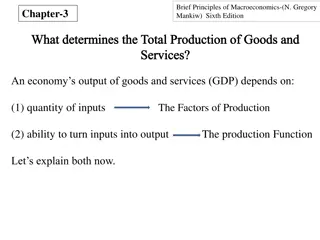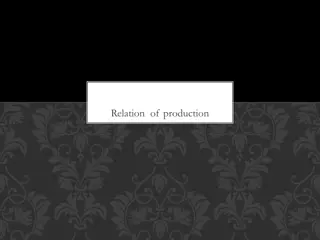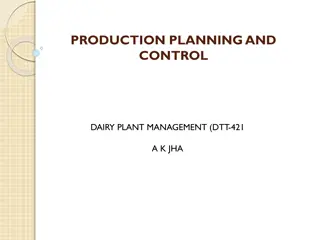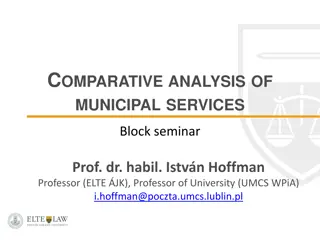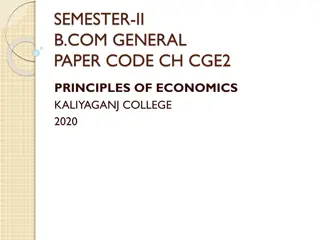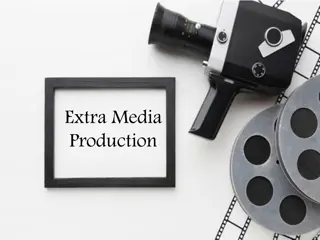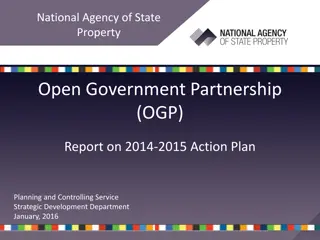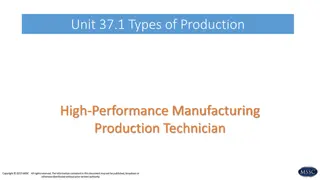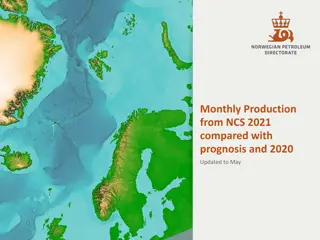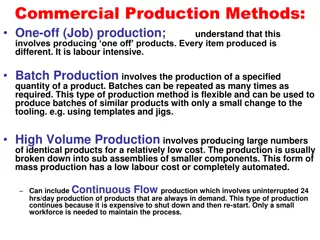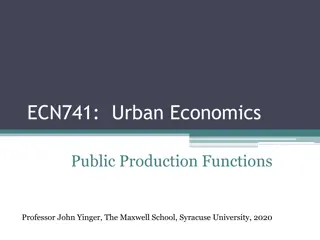Understanding Co-Production in Public Services
Co-production in public services involves a collaborative approach where all stakeholders work together on an equal basis to design and deliver services. This method focuses on building on people's existing capabilities, promoting reciprocity and mutual support, and blurring distinctions between professionals and service users. The Public Service Matrix illustrates different levels of involvement and collaboration between professionals, service users, and communities in service planning and delivery.
Download Presentation

Please find below an Image/Link to download the presentation.
The content on the website is provided AS IS for your information and personal use only. It may not be sold, licensed, or shared on other websites without obtaining consent from the author. Download presentation by click this link. If you encounter any issues during the download, it is possible that the publisher has removed the file from their server.
E N D
Presentation Transcript
Welcome Introductions
What do we mean by co-production?
Defining what is meant by co-production Co-production is a way of working, where everybody works together on an equal basis to create a service or come to a decision which works for them all. Co- production is a process that involves citizens in the design and delivery of services. PAGE 3
Building on peoples existing capabilities Value all participants with reward (reciprocity) and mutual support Peer support networks Blurring distinctions with building trust and shared power and responsibility Facilitating rather than delivering Taking an asset based approach PAGE 4
The Public Service Matrix Professionals as Professionals as sole service planner sole service planner Service users/ community& professionals as co- planners planners Service users/ community& professionals as co- No professional input into input into No professional service planning service planning Traditional professional service provision provision Traditional professional service Professional service provision -users and communities involved in planning and Professional service provision -users and communities involved in planning and design design Bespoke services commissioned by users and delivered Bespoke services commissioned by users and delivered by professionals by professionals Professionals as sole service delivers sole service delivers Professionals as User co-delivery of professionally User co-delivery of professionally designed services designed services Full user/ professional/ community co- production production Full user/ professional/ community co- User/ community delivery of services with little formal/ professional planning or design planning or design User/ community delivery of services with little formal/ professional Professionals/ users/ communities Professionals/ users/ communities as co-deliverers as co-deliverers User/ community delivery of professionally User/ community delivery of professionally planned services planned services User/ community delivery of co- planned or co- User/ community delivery of co- planned or co- designed services designed services Self-organised Self-organised community provision community provision Users/ communities as sole deliverers as sole deliverers Users/ communities PAGE 5
What are the benefits? Increases people s self-worth and confidence, as well as providing skills and experience. Everyone can benefit from peer networks and support and gain a new sense of purpose. It can be motivating for staff running services and can re- ignite their passion for their job. Co-production can make services a better fit for the people that use them, and more accessible. PAGE 7
What are the benefits? Lived Knowledge - Individuals and communities are the experts in their own situation. It can make an otherwise institutional situation feel more human. It is cost effective Get it right first time. Future orientation history is not essential PAGE 8
Three Levels of co-production Transformative equal Intermediate - two way Basic one way PAGE 10
Transformative: citizens are equal partners in all aspects of commissioning, design, service delivery and evaluation. This approach transforms power and control. Co-design, Co-produce, Co-deliver and An equal partnership regardless of diversity Co-production embedded in practice at every stage Led jointly by citizens and staff we All have a voice , are listened to and valued for their views All will advocate for each other Feedback provided is acted upon and details of actions are circulated Citizens delivering training for staff on co-production Attendance to team meetings/Cabinet Member/Management team meetings as equal contributors Social workers co-producing a package of care and support needs jointly with service users, families and carers. Commissioners procuring a contract with citizens involved throughout the decision making process. Co-commission PAGE 11
Intermediate: recognises what citizens can offer yet recognises that a power imbalance between citizens and professionals remains in place Expecting a two way relationship for example; sharing information and expecting to receive a response An invitations to meet and share views A consultation engagement activity: comment/survey/meeting Requesting citizens views in order to influence change Asking citizens to comment and make recommendations on a specific piece of work. Involving citizens in meetings but not as equals Citizen representation on Boards in order to influence discussions Representation on interview panels with decision regarding appointment being left with Professionals Mystery shopping by citizens to inform service delivery PAGE 12
Basic: acknowledges people's action as essential to the desired outcome. One way communication Influencing peoples views Tokenism Informing people (or telling people) Sharing details of something Giving information about an activity (no response required) Giving advice Signposting to services/information elsewhere Raising awareness PAGE 13
Citizen Involvement Team Digital an @brumgetinvolved





